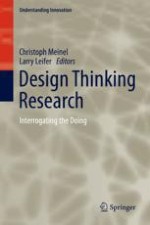2021 | OriginalPaper | Chapter
Designing as Performance: Bridging the Gap Between Research and Practice in Design Thinking Education
Authors : Jonathan Antonio Edelman, Babajide Owoyele, Joaquin Santuber, Anne Victoria Talbot
Published in: Design Thinking Research
Publisher: Springer International Publishing
Activate our intelligent search to find suitable subject content or patents.
Select sections of text to find matching patents with Artificial Intelligence. powered by
Select sections of text to find additional relevant content using AI-assisted search. powered by
